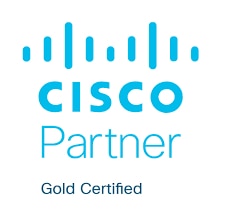February 08, 2019
5 SD-WAN Factors That IT Leaders Should Consider
Software-defined WAN solutions provide IT managers with an option to improve end-user experience, simplify management and reduce long-term costs.

Software-defined WAN applies software-defined networking principles over the WAN, redefining the management paradigm by operating the WAN as a holistic system rather than individual locations. While this approach represents a departure from traditional networking, SD-WAN can lead to reduced costs, streamlined management, improved end-user experience and other benefits. Events such as router refreshes or service provider contract renewals offer an ideal chance for IT leaders to consider whether SD-WAN is right for their organizations.
Here are five SD-WAN factors that IT leaders should consider as they plan out the future of their WANs.
1. Upfront Costs, Long-Term Savings
One of the big benefits of SD-WAN is that it can intelligently shift traffic that is less latency-sensitive away from a multiprotocol label-switching circuit and onto an internet circuit. Because MPLS is much more expensive than the internet on a per-megabit basis, this can lead to a substantial cost avoidance over time, as organizations rely less on MPLS and do not have to increase those circuit sizes to account for increased user traffic. In some cases, organizations can make the savings even greater by reducing MPLS circuit sizes or renegotiating contracts to a lower rate.
Organizations shouldn’t expect to save money during the first 12 to 18 months of an SD-WAN deployment, as there is significant time and expense associated with rolling out the technology. However, organizations typically recoup their upfront investments within two years, and then see ongoing savings after that.
2. Simplified Management
Most SD-WAN solutions offer streamlined management via a central online portal. In traditional networking, administrators need to remotely access routers and manually configure the devices, leading to significant personnel overhead. The centralized management of an SD-WAN architecture allows organizations to make changes to thousands of devices with relative ease.
3. The Importance of Planning and Design
To fully reap the benefits of SD-WAN, organizations need to spend time planning out their implementations. If they quickly deploy an SD-WAN solution to offload traffic to the internet, not taking the time to standardize or leverage templates that reduce management complexity, organizations will not see the reduced management overhead promised by SD-WAN solutions. At CDW, we work closely with organizations that are rolling out SD-WAN for the first time, ensuring that they design and manage taking into account these potential operational efficiencies.
4. A Maturing Marketplace
In discussions with IT leaders, I’ve found that many are interested in SD-WAN, but they’re intimidated by a relatively young marketplace, where as many as 60 different vendors have offered various solutions. Fortunately, the SD-WAN marketplace is beginning to shake itself out, with only around two dozen offerings taking the lead and a few being the strongest contenders. At CDW, we work with IT leaders to identify their drivers and goals and help select a solution that will yield long-term benefits.
5. Decentralized Security
Until recently, most SD-WAN solutions have provided only basic firewall capabilities, without offering application-based firewalls or content filtering. (Typically, these features have only been available via add-on solutions.) However, solutions like Cisco SD-WAN and Meraki SD-WAN now provide unified threat management (UTM), allowing organizations to move to a decentralized security model with direct internet access (DIA) — a huge win, as centralized security can be extremely costly when trying to provide an optimal user experience. Decentralized security solutions allow users access to internet-based applications, such as SaaS applications, securely and optimally through DIA.
To get better results from their networking solutions, organizations must embrace new ways of doing things. For companies faced with end-of-life WAN hardware or expiring service contracts, SD-WAN is worth exploring.
This blog post brought to you by:

